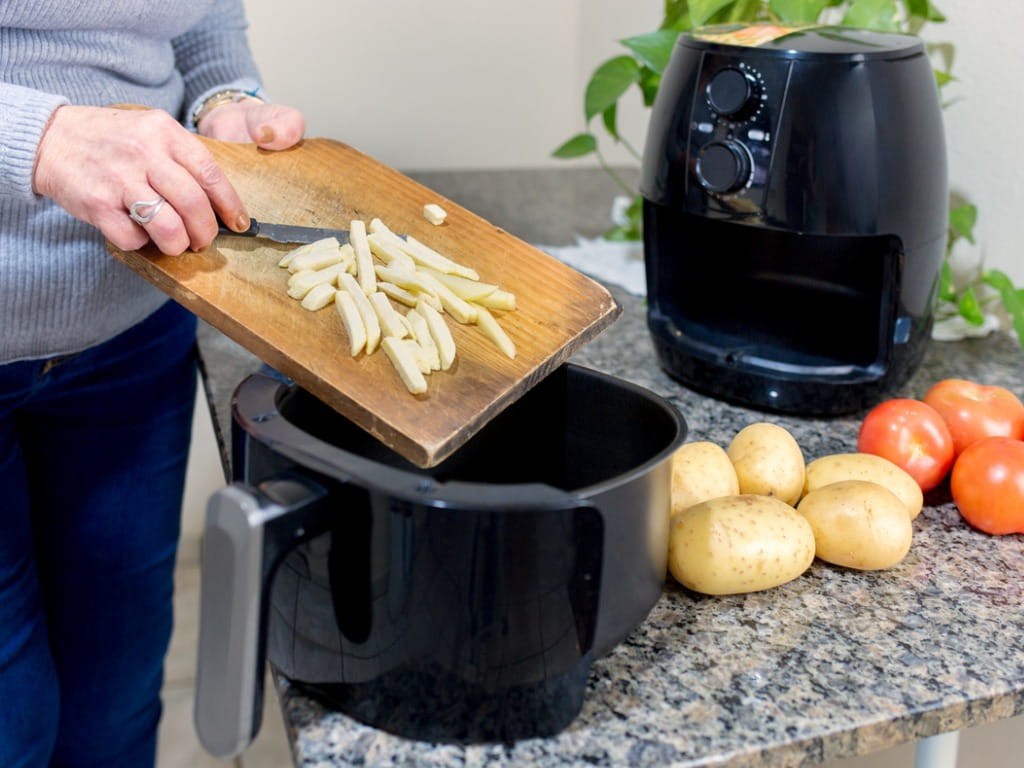Plus it's easily recreated in the future if there is any need. I have never understood those who want to build an hydrogen economy.Gas is cheaper, easier to control and virtually zero maintenance cost. It also still works when there's a power cut. I've never experienced a gas cut in my lifetime.
Changes to selling e-bikes, conversion kits and batteries on eBay.co.uk - No more private (personal) sales.
- Thread starter danielrlee
- Start date
I make more than enough gas every day to cook all my food. If only I had a way to harvest it!Plus it's easily recreated in the future if there is any need. I have never understood those who want to build an hydrogen economy.
I thought saddle you bought recently was intended as a part of harvesting device. No?I make more than enough gas every day to cook all my food. If only I had a way to harvest it!
Never had any such problems and I've been cooking for myself and sometimes others for 64 years. The only element failure experienced was one early radiant ring, but I soon got rid of the radiant ring cooker anyway.I may be heading in the opposite direction because in my experience, the elements of ceramic hobs don't as last long, are difficult and much more expensive (pricier than the hobs) to source, and my new one isn't even designed with repair in mind - although it's currently working ok (apart from a few months ago when one hob switched to full power by itself, and wouldn't switch off... suddenly incinerating slow cooked lamb to ash, I suspect because of a fault which originated from 3 hour-long use of a thick heavy cast iron pot at low level, the radiant heat from which terminally [possibly] confused the control board [I reckon it crashed, possibly due to overheating] via heat sensors being activated under other rings, despite those rings being off) case is RIVETED! With metal tough enough to completely resist genuine cobalt drill bits. Leaving it without power for 24 hours reset the control board, works ok again now, about six months and counting. Also, the glass surface of ceramic hobs crack easy. If water gets through those cracks, mixes with oil bult up over time with cooking to form droplets, they can explode - that's what happened with my previous ceramic hob. Fortunately, my face wasn't above the glass at the time, and it didn't sent toughened glass shards through my head and body because most of the force expelled from holes in the case underneath. But most built-ins are usually easy to install yourself. Install them wrong by sticking the top glass down with silicone sealant or strong adhesive, which won't allow the glass top to expand, and you'll have the glass cracking problem leading to the explosion scenario - the glass sheet should glide over heat resistant foam tape, as it expands and shrinks with heat. Avoid scratching the "toughened" glass with heavy cookware or over-enthusiastic cleaning, because that can lead to cracks, which leads again to the explosion scenario. So much easier and cheaper to swap out normal electric cooker elements.
.
Yes, I could fit a vacuum pump to it to suck the gas out through the central hole, but what if the pump sucked out more than gas?I thought saddle you bought recently was intended as a part of harvesting device. No?
Induction Cooktop Explosion

 www.greenbuildingadvisor.com
www.greenbuildingadvisor.com
Induction Cooktop Explosion - GreenBuildingAdvisor
Hi, good folks, I experienced what I can’t help but describe as a Hiroshima-like blast two mornings ago, and I am soliciting thoughts to discuss on the FHB podcast . […]
There's always drama in our kitchen. Curse of the serial culinary experimenter, and not just with cereals. Invented yeastless complete protein sprouted bean bread and pittas the other week:Never had any such problems and I've been cooking for myself and sometimes others for 64 years. The only element failure experienced was one early radiant ring, but I soon got rid of the radiant ring cooker anyway.
.
https://www.pedelecs.co.uk/forum/threads/alternative-firmware-to-make-my-laser-printer-print-regardless-of-toner-status.47763/#post-725725
...and what's more, they're not farty, because antinutrients are reduced by the sprouting process.
Gas is cheaper, easier to control and virtually zero maintenance cost. It also still works when there's a power cut. I've never experienced a gas cut in my lifetime.
We had one dramatic failure; 40 years ago on a cooker that was far from new then. A ring shorted making a huge flash. Our daughter (3 years or so) was sitting on the worktop right next to the cooker. I was at the other end of the room looking the other way and the flash was very visible.Never had any such problems and I've been cooking for myself and sometimes others for 64 years. The only element failure experienced was one early radiant ring, but I soon got rid of the radiant ring cooker anyway.
.
The electric was only a stopgap before we got the gas properly arranged.
I've never gotten on with cooking in a gas oven and have always found them difficult to control with uneven temperatures. The best combination IMO is gas hobs and an electric fan oven.
To tell the truth, most of my cooking is done in an air-fryer nowadays, due to the speed & efficiency of it. I'd even claim that buying an air-fryer was a life-changing event and I wish I'd have purchased one sooner.
To tell the truth, most of my cooking is done in an air-fryer nowadays, due to the speed & efficiency of it. I'd even claim that buying an air-fryer was a life-changing event and I wish I'd have purchased one sooner.
The only problem is that they give you cancer.I've never gotten on with cooking in a gas oven and have always found them difficult to control with uneven temperatures. The best combination IMO is gas hobs and an electric fan oven.
To tell the truth, most of my cooking is done in an air-fryer nowadays, due to the speed & efficiency of it. I'd even claim that buying an air-fryer was a life-changing event and I wish I'd have purchased one sooner.

Do Air Fryers Cause Cancer?
Acrylamide is a chemical that can be created by cooking processes including baking, air frying, and toasting. Acrylamide is considered a pro
www.poison.org
Get a grip! There's nothing unique about air fryers; they're just mini convection ovens with a little radiative heating due to the position of the heating element. They don't actually fry food.The only problem is that they give you cancer.
Nearly all cooking methods give a risk of cancer if you overheat your food.
Also, are you aware of Betteridge's Law of Headlines?
There is a clear mechanism of contamination. The products of burnt fats are kept in the vicinity of the food. They cannot escape, unlike other cooking processes. It's been known for a long time and advice has always been given to avoid consuming burnt fats.Get a grip! There's nothing unique about air fryers; they're just mini convection ovens with a little radiative heating due to the position of the heating element. They don't actually fry food.
Nearly all cooking methods give a risk of cancer if you overheat your food.
Also, are you aware of Betteridge's Law of Headlines?
This applies to most cooking methods.There is a clear mechanism of contamination. The products of burnt fats are kept in the vicinity of the food. They cannot escape, unlike other cooking processes. It's been known for a long time and advice has always been given to avoid consuming burnt fats.
Why do you allow yourself to get swept up by every scare story and conspiracy theory going? I suspect you’ve sniffed too much electrolyte over the years and it’s affected your brain somewhat. Try avoiding all those ‘alternative’ news sources for a few weeks and you should find things return to normal pretty quickly.
Don't you like bbq?There is a clear mechanism of contamination. The products of burnt fats are kept in the vicinity of the food. They cannot escape, unlike other cooking processes. It's been known for a long time and advice has always been given to avoid consuming burnt fats.
Other cooking processes allow the products of burnt fats to escape from the food. The most dangerous ones are in a mist, evaporating from the surface. Air fryers contain all these substances in the vicinity of the food and they cannot escape. Instead, they contaminate the food. You will see the gum you have to frequently remove from inside your air fryer. That's the stuff you need to avoid consuming. As much as is in your air fryer was also on your food.This applies to most cooking methods.
Why do you allow yourself to get swept up by every scare story and conspiracy theory going? I suspect you’ve sniffed too much electrolyte over the years and it’s affected your brain somewhat. Try avoiding all those ‘alternative’ news sources for a few weeks and you should find things return to normal pretty quickly.
You can do what you want. Arguing isn't going to change anything. My goal is only to inform you so that you can make your own choice. Cancer isn't a pleasant way to die, so think about it. Like smoking, one fag isn't going to give you cancer. The risk goes up the more you smoke and the longer you do it. Many smokers deny the risk. Some live to a very old age. Many don't.
Now that really is the best way of producing thick, jet black, known carcinogenic tar coatings on food. All barbecue invitations I get receive a "thanks, but no thanks" from me.Don't you like bbq?
I don't see the attraction of half raw, half burnt to a cinder food.
.
Fresh rise in mortgage rates predicted


Mortgage rates predicted to increase in next few days
Recent falls in rates could come to "an abrupt halt" in the next few days, according to brokers
www.bbc.co.uk
No, the people who cause the fires with inappropriate usage always skipped school anyway.Fires will cost lives while ebike battery repair isn't taught in schools with maths and English.
Related Articles
-
 MTF Enterprises announces acquisition of EMU Electric Bikes
MTF Enterprises announces acquisition of EMU Electric Bikes- Started by: Pedelecs
-
 Wisper 806T folding bike wins Which? ‘Best Buy’
Wisper 806T folding bike wins Which? ‘Best Buy’- Started by: Pedelecs
-
 Sustrans calls for protected cycle lanes
Sustrans calls for protected cycle lanes- Started by: Pedelecs
-
 Amazon launch their first UK e-cargo micromobility hub
Amazon launch their first UK e-cargo micromobility hub- Started by: Pedelecs



